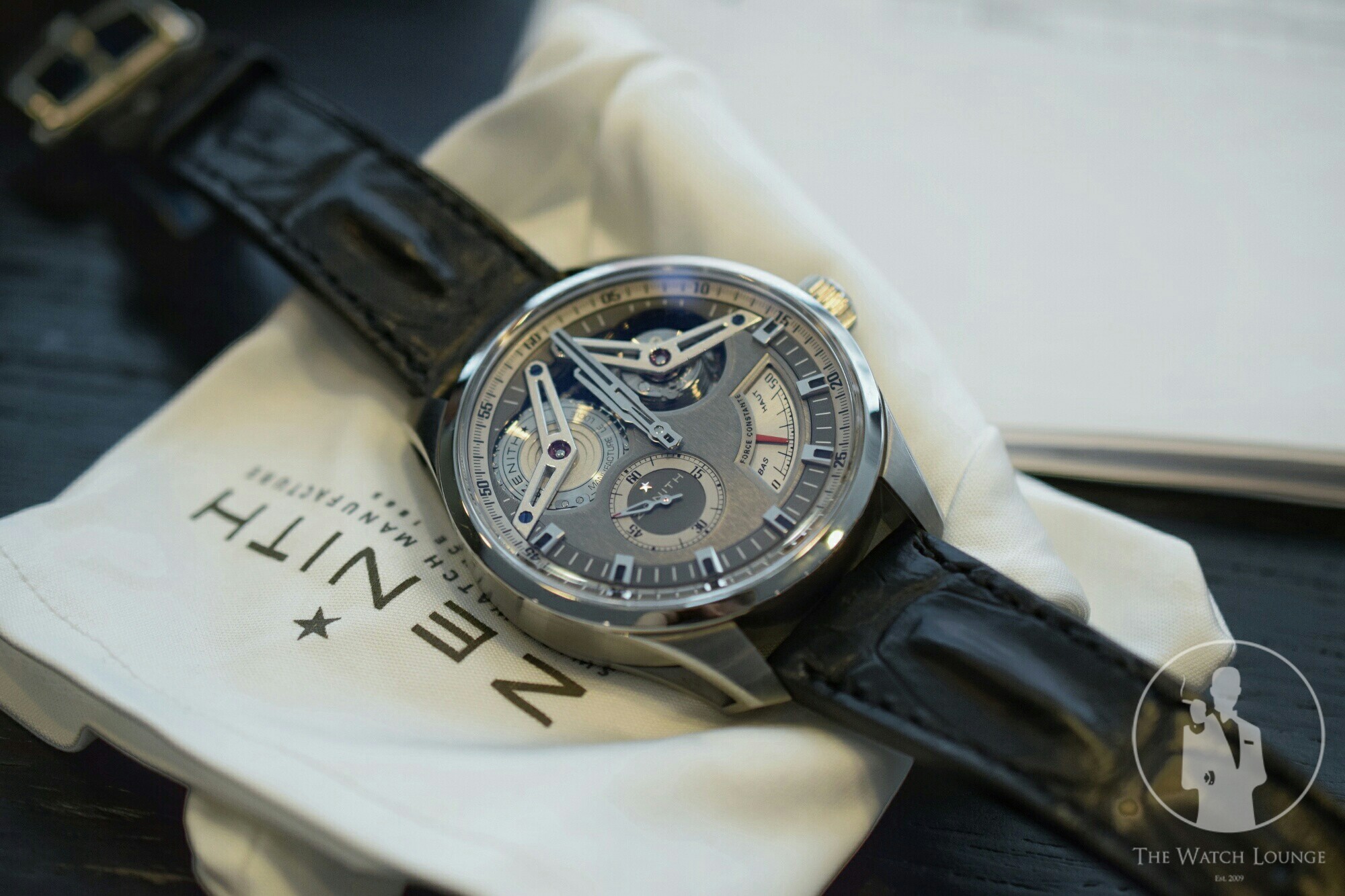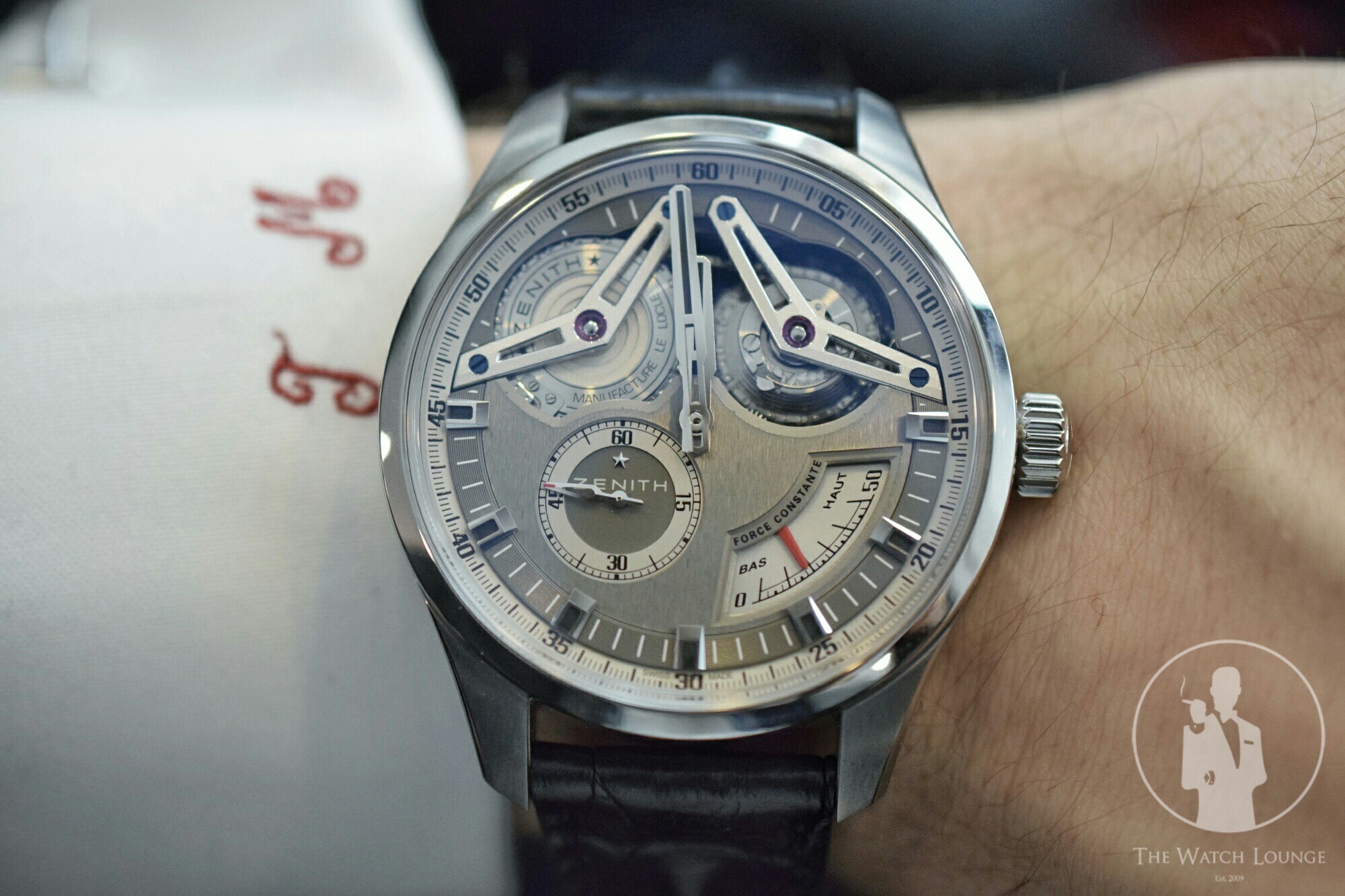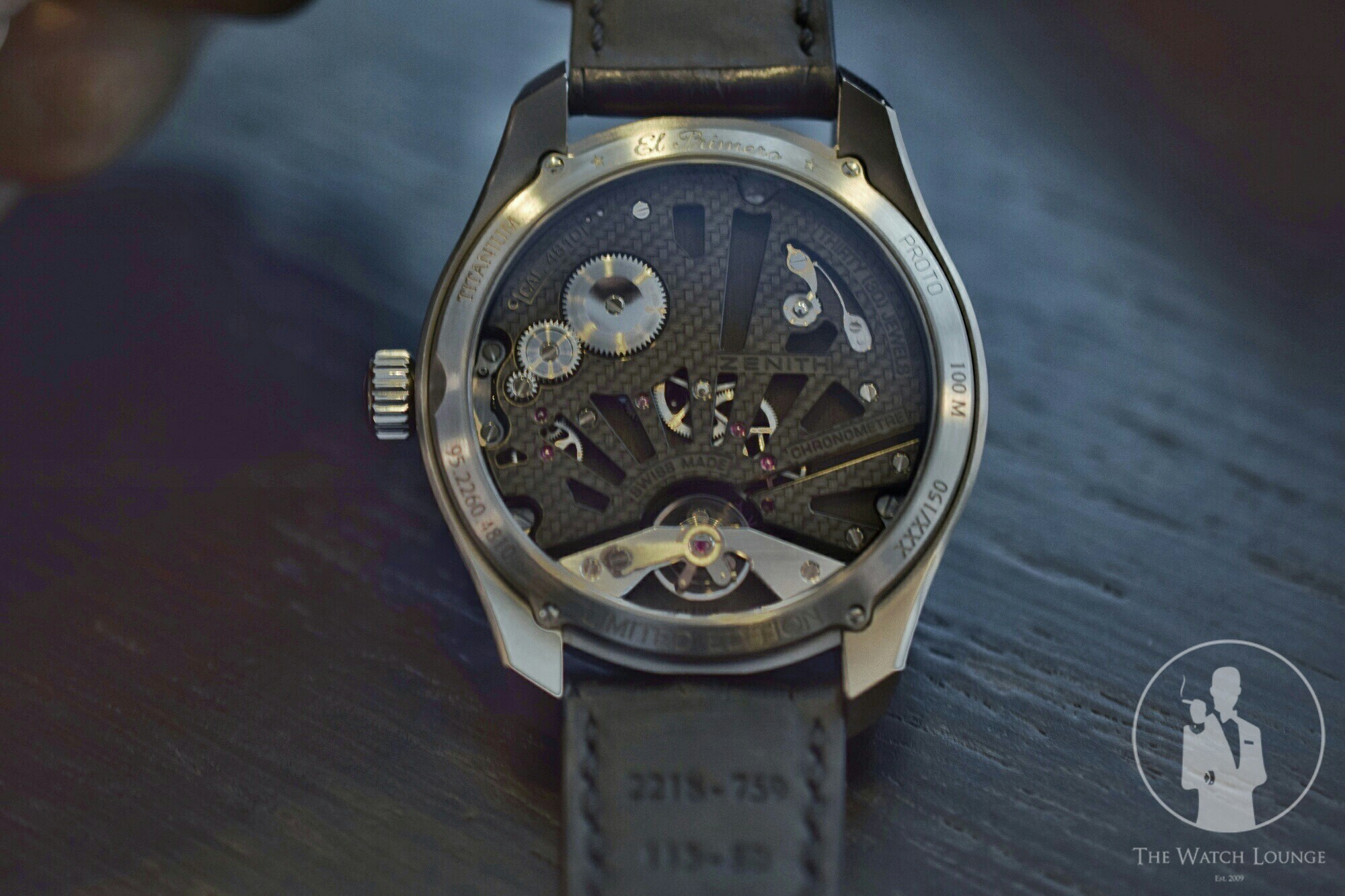Earlier this year Zenith unveiled the Academy Georges Favre-Jacot as part of its 150th anniversary celebrations. A limited edition of 150-pieces in rose gold, the Academy Georges Favre-Jacot was a technical masterpiece for Zenith. There was just one problem – it kind of looked like something you’re grandfather would wear. Despair not though, as just last month the brand debuted a decidedly more modern looking version of the Academy Georges Favre-Jacot in a titanium case.
Zenith Academy Georges Favre-Jacot Titanium
If you hadn’t guessed already these rather elaborately named timepieces have been created to pay homage to Zenith’s founder, Mr. Georges Favre-Jacot, who established a watch factory in Le Locle back in 1865 that would eventually become the Zenith we know and love today.
There’s no doubt 150 years is an impressive bit of history, even in an industry as storied as this one and so it’s no surprise that Zenith has made the most of the opportunity. Enough about the past though, let’s talk about this gorgeous watch before us now.
Although the Academy Georges Favre-Jacot is quite striking – especially in titanium – it is still understated enough (at least by Zenith’s standards) that a novice enthusiast may not immediately realise the significance of the piece. Closer inspection though quickly reveals that there is something special going on here. Powered by a high frequency, hand-would El Primero calibre, the movement is equipped with a chain and fusée mechanism, often referred to as a ‘constant-force’ mechanism.
A rare sight in mechanical watchmaking, the chain and fusée system has been in use since the 15th Century. Such is the complexity involved however that only very few brands possess the know-how and the ability to design and execute such a mechanism. One of my recent favorites from the past few years was Romain Gauthier’s exceptional Logical One.
If you’re not already familiar with the concept it’s important to know that the underlying principle of constant force mechanisms is to regulate the output of energy at a constant state independent of the input. Typically speaking, the power supply that runs and regulates your mechanical watch – no matter how expensive it was – will vary greatly depending on the state of wind of the mainspring. Consequently, your highly precise mechanical watch becomes a little less precise as the mainspring barrel unwinds and the power supply starts to run low.
To try and overcome this a fuse – a cone-shaped pulley wound with a cord or a chain – attaches to mainspring barrel and compensates for the diminishing torque/power of the mainspring as it runs down, effectively regulating the power supply and thus providing ‘constant force’. If you look closely at the top-half of the dial of Academy Georges Favre-Jacot you can see this system at work complete with tiny chain.
Presented in a 45mm x 14.35mm titanium case, the Academy Georges Favre-Jacot wears very comfortably on the wrist, its lightweight construction belying its complexity (and hefty price tag). On the bottom right-hand side of the dial a modern-looking power reserve indicator helps you keep track of the constantly regulated 50 hours of power, whilst a small seconds indicator occupies the space between 7 and 8 o’clock.
What I perhaps like most though is just how unpretentious the Academy Georges Favre-Jacot looks in titanium. You could wear this watch out to your local bar with your friends and whilst it would certainly turn a few heads not many people would guess at its complexity. All they would see is a cool-looking, kind of chunky watch with a bit of a funky dial.
Like its elder sibling the Academy Georges Favre-Jacot Titanium will be offered as a limited edition of 150 pieces and will run you CHF69,000 (about US$69,000).
Check out Zenith Watches for more information.



Great publication.
Thanks Rich, always nice to get feedback, especially when it’s positive!